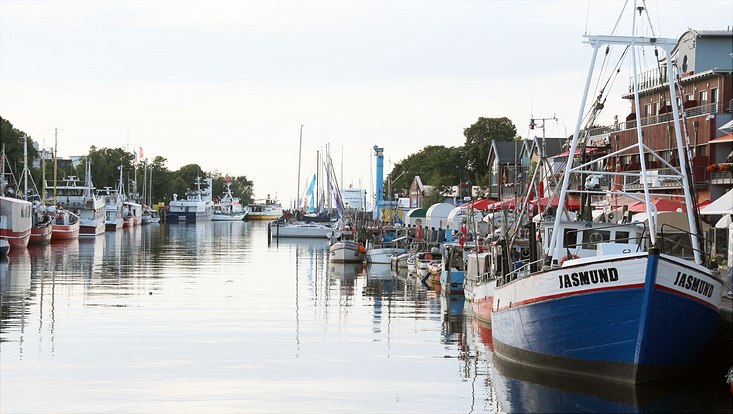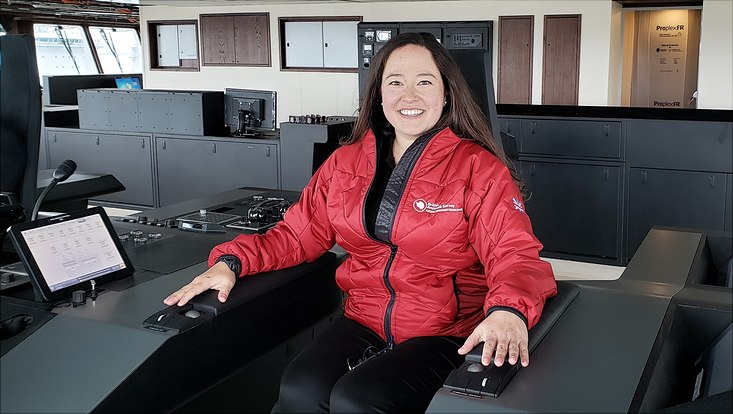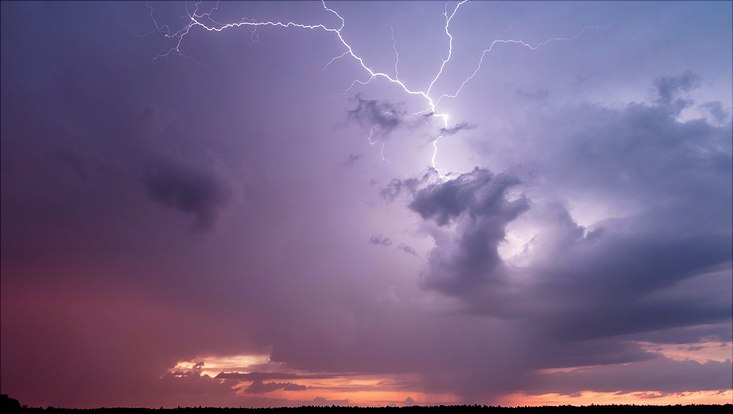Coastal Fisheries and Climate ChangeHow will Baltic Fisheries Survive without Cod and Herring?
26 October 2020, by Stephanie Janssen

Photo: UHH/CEN/T. Wasilewski
Cod and herring are not faring well. Recently, the European Union once again adjusted the fishing quotas for Germany’s Baltic coast. As a result, many fishers have been forced to temporarily quit fishing or to sell their boats. Christian Möllmann is a fishery expert at Universität Hamburg’s Center for Earth System Research and Sustainability (CEN). He argues that the biology of the fish stocks needs to be considered together with the social consequences for the community.
Professor Möllmann, last week the EU announced new fishing quotas for Germany’s Baltic coast. While in the late 1980s, 100,000 metric tons of herring were still caught annually, the total amount currently permitted has now been reduced from 3,000 to roughly 1,500 metric tons. What will the fishers do now?
Christian Möllmann: Many are at wit’s end. Some of them are taking a “wait and see” approach and will receive financial compensation for taking a hiatus. Some will give up fishing altogether and receive a scrapping bonus for their cutters. Others will sell their quotas to high sea fleets, which frequently plow up the seabed with their trawling nets.
You’re coordinating a new research project that is due to start soon at five German institutes. Over a period of three years, you’ll be investigating how inshore fishing in the West Baltic can adapt to climate change. Isn’t that virtually irrelevant if there are no fish there anyway?
Yes, in the worst-case scenario, there will hardly be any cod or herring there by the end of the project. And even if the fishing quotas are adjusted – neither species is coping well with climate change. But with this project, we want to avoid knowingly heading for disaster. We’ll develop a range of long-term adaptation strategies, which the respective regions can then select and implement to match their specific needs. When it comes to the fishing industry, there has been very little long-term planning to date.

How are the two commercially fished cod and herring species doing at the moment? Unlike for herring, next year five percent larger cod catches will be permitted.
The herring and cod stocks have collapsed. The situation for the herring is especially grim. I’m skeptical whether they will have sufficiently recovered for increased fishing to resume five years from now. But the fishers and their boats are part of the coastal towns’ culture. Therefore, in our project we’ll also take into account social aspects such as employment, tourism and tradition.
There are also the developments caused by climate change. The water is becoming warmer. Is that why the fish are doing so badly today?
Until roughly five years ago, both species were massively overfished. Otherwise the stocks would be much larger and healthier – and as a result more resistant to climate change. Basically, the warmer it becomes, the fewer offspring that cod and herring produce. This is, for example, because the warmer water means that the herring larvae go to their spawning grounds two weeks earlier. However, there aren’t yet sufficient quantities of their preferred food available when they get there.
The Federal Ministry of Education and Research is providing more that 1.5 million euros of funding for your project. How do you plan to develop the measures and tools needed for climate change adaptation?
First of all we’ll gather data on how vulnerable the individual species are to global warming. We’ll then use that information to investigate how endangered the fish community as a whole is. Lastly we’ll develop and combine computer models of the lifecycles of cod and herring, and for the entire food chain.
What can these coupled models do?
We use our computations to examine particular scenarios. For example, how will flatfish develop if it becomes warmer and the few cod remaining offer little competition for food? What will happen to stocks if only small boats with gillnets are permitted? We’ll then use that information to develop various scenarios, which the responsible authorities can use in long-term future planning for individual regions.
What measures could come out of it? Should the fishers retrain for new professions, or specialize in new fish species?
If, for example, we find that other species benefit from climate change on the whole, that could be commercially interesting. But, as ever, the interrelationships are complex. Above all, we’ll constantly work together with the local residents. They have information and preferences that we simply don’t and can’t know on our own. This will enable them to later become “spreaders” and share our findings in their towns and communities.
Fisheries research project
Name: balt_ADAPT Adaptation of the Western Baltic Coastal Fishery to Climate Change
Operation time: 01.11.2020 – 31.10.2023
Funding: Federal Ministry of Education and Research
Finacial Funding: 1.5 million euros over three years
Coordination: Prof. Dr. Christian Möllmann, Universität Hamburg, CEN – Center for Earth System Research and Sustainability, CLICCS – Cluster of Excellence “Climate, Climatic Change, and Society”
Project partner: German Centre for Integrative Biodiversity Research Halle-Jena-Leipzig (iDiv), Christian-Albrechts-Universität zu Kiel (CAU), Thünen-Institute of Balstic Sea Fisheries Rostock (TI), Helmholtz Centre for Ocean Research Kiel (GEOMAR)


